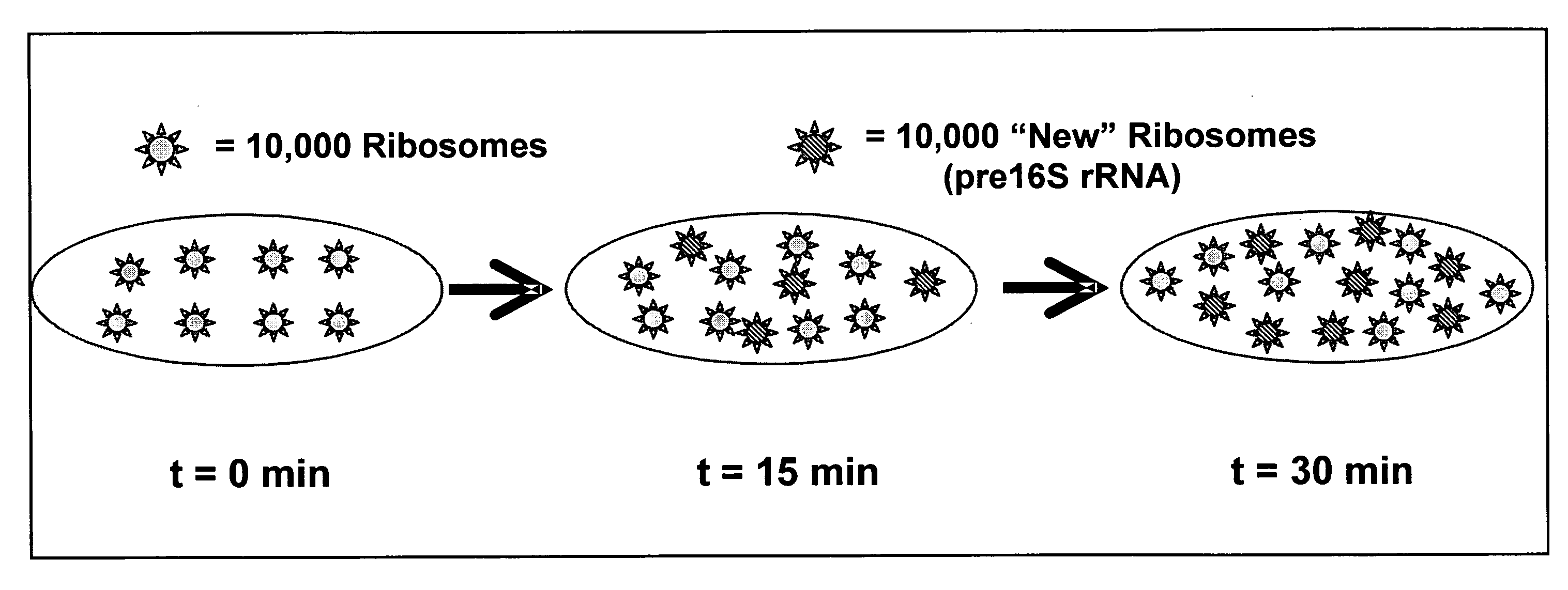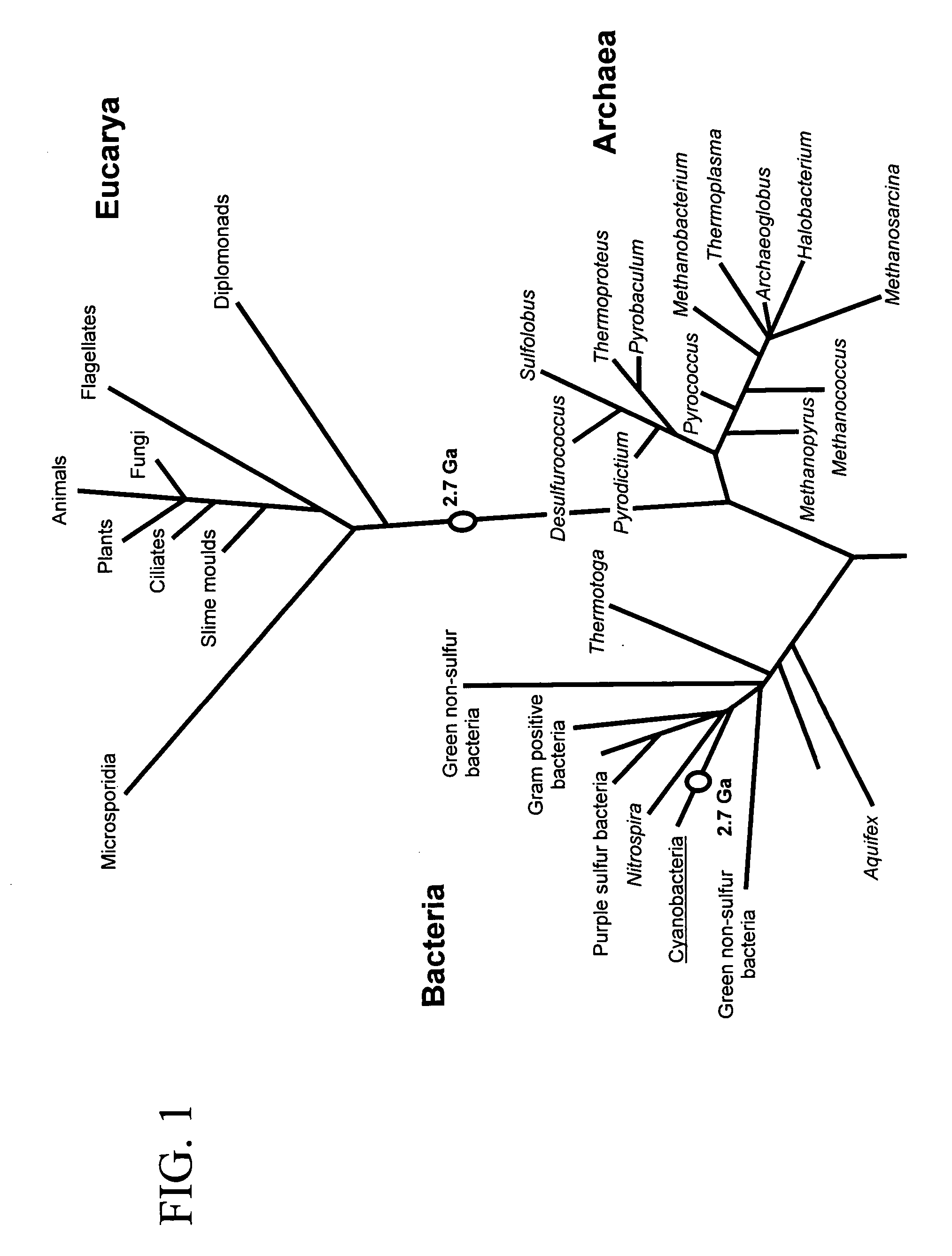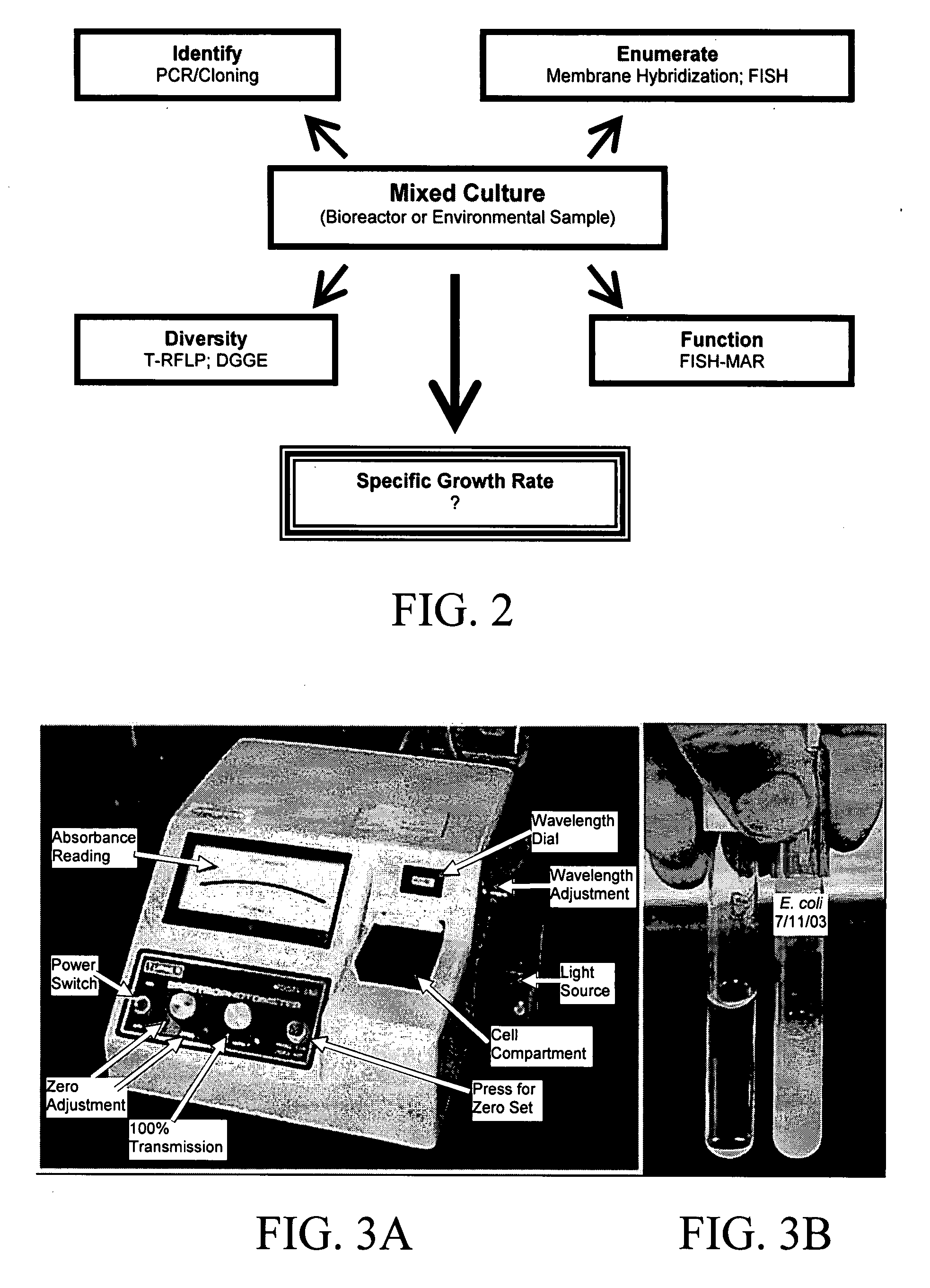Method for determining the specific growth rate of distinct microbial populations in a non-homogeneous system
a technology of non-homogeneous system and specific growth rate, applied in the direction of microbiological testing/measurement, biochemistry apparatus and processes, etc., can solve the problems of limiting the acceptance of second wave tools, difficult method mastery, and ribosomes that cannot withstand major sequence changes or life ceases, etc., to achieve rapid measurement of specific growth rate or cell doubling time
- Summary
- Abstract
- Description
- Claims
- Application Information
AI Technical Summary
Benefits of technology
Problems solved by technology
Method used
Image
Examples
example 1
FISH Results Demonstrate a Strong Linear Relationship Between the dF / dtCm and Specific Growth Rate for A. calcoaceticus Cultured at Four Different Specific Growth Rates
[0164] The experimental results described below provide evidence that the FISH-RiboSyn method can be used to measure the dF / dtCm, which is directly related to the specific growth rate. In FIGS. 10A-10F, 11A-11C, 12A-12C, and 13A-13C, DAPI and FISH images are shown for the chloramphenicol-treated cultures of A. calcoaceticus. For the stationary phase culture (FIGS. 10A-10F), DAPI images (FIGS. 10A-C) reveal several bacteria cells, but the FISH images (FIGS. 10D-F) provide evidence that the chloramphenicol-treated cells did not accumulate pre16S rRNA because ribosome synthesis has ceased, which results in cells with low and constant fluorescent intensity. However, chloramphenicol-treated cells from the log growth cultures (FIGS. 11A-11C, 12A-12C, and 13A-13C) have active ribosome synthesis, which results in the accumul...
PUM
| Property | Measurement | Unit |
|---|---|---|
| melting temperature | aaaaa | aaaaa |
| Tm | aaaaa | aaaaa |
| temperature | aaaaa | aaaaa |
Abstract
Description
Claims
Application Information
 Login to View More
Login to View More - R&D
- Intellectual Property
- Life Sciences
- Materials
- Tech Scout
- Unparalleled Data Quality
- Higher Quality Content
- 60% Fewer Hallucinations
Browse by: Latest US Patents, China's latest patents, Technical Efficacy Thesaurus, Application Domain, Technology Topic, Popular Technical Reports.
© 2025 PatSnap. All rights reserved.Legal|Privacy policy|Modern Slavery Act Transparency Statement|Sitemap|About US| Contact US: help@patsnap.com



